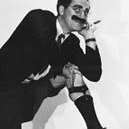Buddhist Tattoos
-
Recently Browsing 0 members
- No registered users viewing this page.
-
Topics
-
-
Popular Contributors
-
-
Latest posts...
-
156
Greta Thunberg’s Gaza Aid Voyage Sparks Controversy After Senator’s Mocking Remark
Tossing cell phones into the sea doesn't seem a very environmentally conscious thing to do. I'm surprised Greta didn't object and urge them to recycle the phones. But I guess she also didn't want numerous calls to Hamas to show up on the phones. -
83
-
13
Rethink in Germany: revamp shelter system in case of Russian attack
You obviously have no idea what a protracted war of attrition is. What it isn't is a linear war of maneuver. >120,000 km2 (20%) is a lot. -
7
Would you ever hit a woman?
It would make more sense for you to make a poll. Have I ever hit a woman? No. Would I ever hit a woman? It's impossible to say as I have no idea what lies ahead. Hopefully, I am never forced to hit anyone again though. -
13
Rethink in Germany: revamp shelter system in case of Russian attack
Yep exactly, got to keep the fear going, nato countries pay the US and the weapons get made, Raytheon etc get paid...sheep lap it the propaganda, which is quite clearly working as you can see by what's is posted by them here. The war machine and shareholders want their money. -
7
Would you ever hit a woman?
In my youth I threw a custard pie at a girl during a food fight. I missed !
-
-
Popular in The Pub






.thumb.jpeg.d2d19a66404642fd9ff62d6262fd153e.jpeg)






Recommended Posts
Create an account or sign in to comment
You need to be a member in order to leave a comment
Create an account
Sign up for a new account in our community. It's easy!
Register a new accountSign in
Already have an account? Sign in here.
Sign In Now